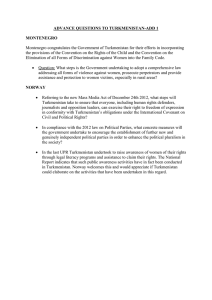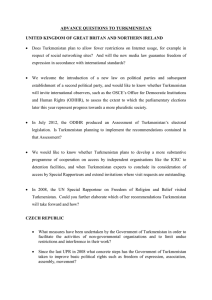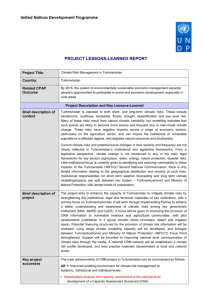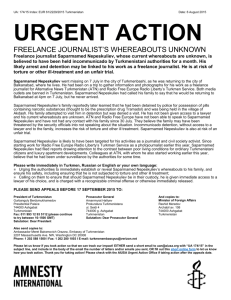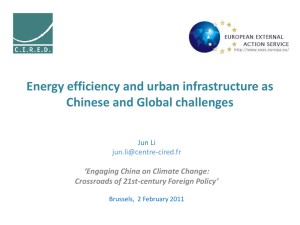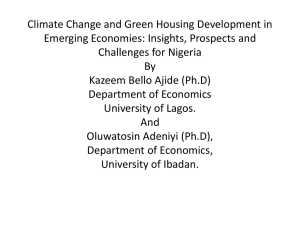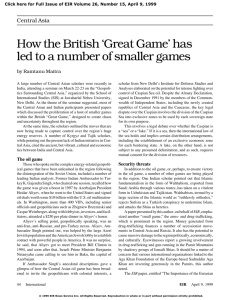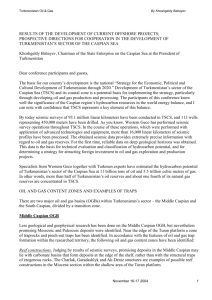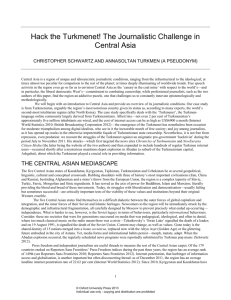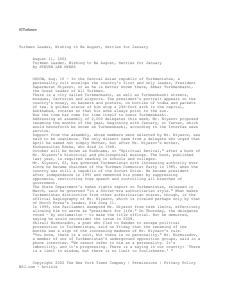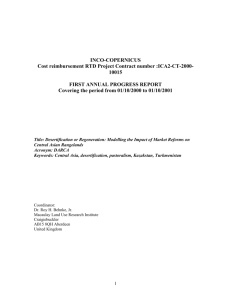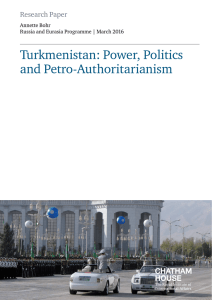Improving Energy Efficiency in the Residential Building Sector of
advertisement
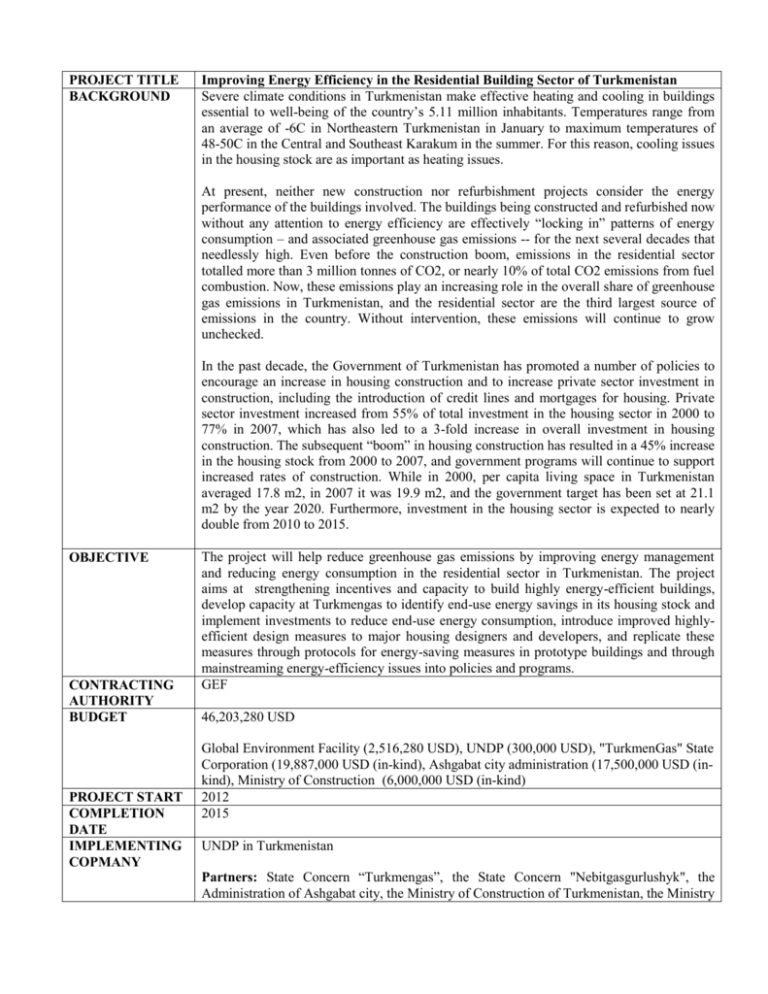
PROJECT TITLE BACKGROUND Improving Energy Efficiency in the Residential Building Sector of Turkmenistan Severe climate conditions in Turkmenistan make effective heating and cooling in buildings essential to well-being of the country’s 5.11 million inhabitants. Temperatures range from an average of -6C in Northeastern Turkmenistan in January to maximum temperatures of 48-50C in the Central and Southeast Karakum in the summer. For this reason, cooling issues in the housing stock are as important as heating issues. At present, neither new construction nor refurbishment projects consider the energy performance of the buildings involved. The buildings being constructed and refurbished now without any attention to energy efficiency are effectively “locking in” patterns of energy consumption – and associated greenhouse gas emissions -- for the next several decades that needlessly high. Even before the construction boom, emissions in the residential sector totalled more than 3 million tonnes of CO2, or nearly 10% of total CO2 emissions from fuel combustion. Now, these emissions play an increasing role in the overall share of greenhouse gas emissions in Turkmenistan, and the residential sector are the third largest source of emissions in the country. Without intervention, these emissions will continue to grow unchecked. In the past decade, the Government of Turkmenistan has promoted a number of policies to encourage an increase in housing construction and to increase private sector investment in construction, including the introduction of credit lines and mortgages for housing. Private sector investment increased from 55% of total investment in the housing sector in 2000 to 77% in 2007, which has also led to a 3-fold increase in overall investment in housing construction. The subsequent “boom” in housing construction has resulted in a 45% increase in the housing stock from 2000 to 2007, and government programs will continue to support increased rates of construction. While in 2000, per capita living space in Turkmenistan averaged 17.8 m2, in 2007 it was 19.9 m2, and the government target has been set at 21.1 m2 by the year 2020. Furthermore, investment in the housing sector is expected to nearly double from 2010 to 2015. OBJECTIVE CONTRACTING AUTHORITY BUDGET PROJECT START COMPLETION DATE IMPLEMENTING COPMANY The project will help reduce greenhouse gas emissions by improving energy management and reducing energy consumption in the residential sector in Turkmenistan. The project aims at strengthening incentives and capacity to build highly energy-efficient buildings, develop capacity at Turkmengas to identify end-use energy savings in its housing stock and implement investments to reduce end-use energy consumption, introduce improved highlyefficient design measures to major housing designers and developers, and replicate these measures through protocols for energy-saving measures in prototype buildings and through mainstreaming energy-efficiency issues into policies and programs. GEF 46,203,280 USD Global Environment Facility (2,516,280 USD), UNDP (300,000 USD), "TurkmenGas" State Corporation (19,887,000 USD (in-kind), Ashgabat city administration (17,500,000 USD (inkind), Ministry of Construction (6,000,000 USD (in-kind) 2012 2015 UNDP in Turkmenistan Partners: State Concern “Turkmengas”, the State Concern "Nebitgasgurlushyk", the Administration of Ashgabat city, the Ministry of Construction of Turkmenistan, the Ministry BENEFICIARIES ACTIVITIES of Power Engineering and Industry of Turkmenistan, the Ministry of Municipal Services of Turkmenistan, the Polytechnic Institute of Turkmenistan Turkmenistan - The first project working meeting was conducted on May 11, 2012 and attended by more 20 stakeholders and specialists in the field of education, engineering, construction and maintenance of residential buildings. The project goals and outcomes, methods of cooperation and commitment of partners to co-finance the construction of new energy-efficiency buildings and reconstruction of existing ones were discussed at the meeting - Partnership with the State Concern “Turkmengas”, the Ministry of Municipal Services and the Department of Energy to purchase and install energy metering devices in pilot buildings was discussed and agreed - The Expert Advisory Board and the working group on development of incentive programs to promote energy efficiency in buildings were established - Selection criteria of pilot buildings to be constructed and reconstructed were developed - Negotiations on selection of pilot sites for three new energy-efficiency buildings to be constructed with the Ministry of Construction and the City administration of Ashgabat were conducted - Negotiations on selection of pilot buildings to be reconstructed with the Ministry of Municipal Services were conducted EXPECTED OUTCOME OUTPUTS PERFORMANCE INDICATORS CONTACTS PROJECT WEBSITE Programme Officer Mr. Rovshen Nurmuhamedov E-mail: rovshen.nurmuhamedov@undp.org Component Manager Ms. Irina Atamuradova E-mail: irina.atamuradova@undp.org Project Technical Advisor Mr. Vadim Schmidt E-mail: vadim.schmidt@undp.org
